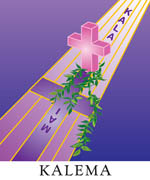
 |
||||
|---|---|---|---|---|
WORSHIP: ASH WEDNESDAY AND LENT |
||||
|
On this first day of Lent, the liturgy is intended to be a challenge to Christian people. It confronts us with the radical change in living which is the way of Christ. We are faced with sin and salvation as alternative directions for our lives – sin as separation from God, from others, from ourselves, and from the natural world; salvation as reconciliation with God, others, the natural world, and ourselves. The liturgy on Ash Wednesday is reduced to its primary elements of Word and Sacrament. We are called to consider our mortality and, in that context, our sin and our absolute dependence on God for salvation and for life. We may be tempted to limit our concern to our sins and our mortality, letting the ashes be the most important thing in our worship today. But the liturgy uses the ashes simply as the starting point for that which is far deeper and ultimately more important: salvation. The ashes, the penitence, the fasting – all these are but the means to the goal of Ash Wednesday, of Lent and of all Christian living: namely, repentance, new life, and ministry to others. |

Lent (Kalema), purple:The cross is draped with limu kala, signifying the Hawaiian ritual of cleansing and forgiveness. "E kala mai" means "Forgive me," and the word "mai" (meaning "toward me") is stitched in mirror image, symbolizing Jesus's invitation to the Cross. |